Saturdays in El Paso are a weekly holiday. A city entrenched in its working-class, majority Latinx roots, people take their weekends seriously. Saturdays provide respite from unforgiving work weeks. People go de compras, visit family and celebrate just because. It’s the perfect day for carne asadas and backyard birthday parties, where the beer and Claude’s sauce brisket abound. At night, the streets flood with cars making the cross-city trip to visit the city’s most popular weekend haunts. Among the most popular are the Cinci district in the west-central part of town and Zaragoza on the far east.
But on this particular Saturday evening, the city is eerily quiet. It’s spirit temporarily silenced. Almost one week to the day has passed since an avowed white supremacist – acting on cues emitted by this country’s racist president – pulled into a Walmart location that just about every El Pasoan has at some point found themselves in and robbed 22 innocent humans of their lives.
As I make the east to west, cross-freeway trip to attend a benefit for the victims’ families, I mention the strange feeling of emptiness to my Uber driver. “Cambio todo,” he tells me in a matter-of-fact tone. It had.
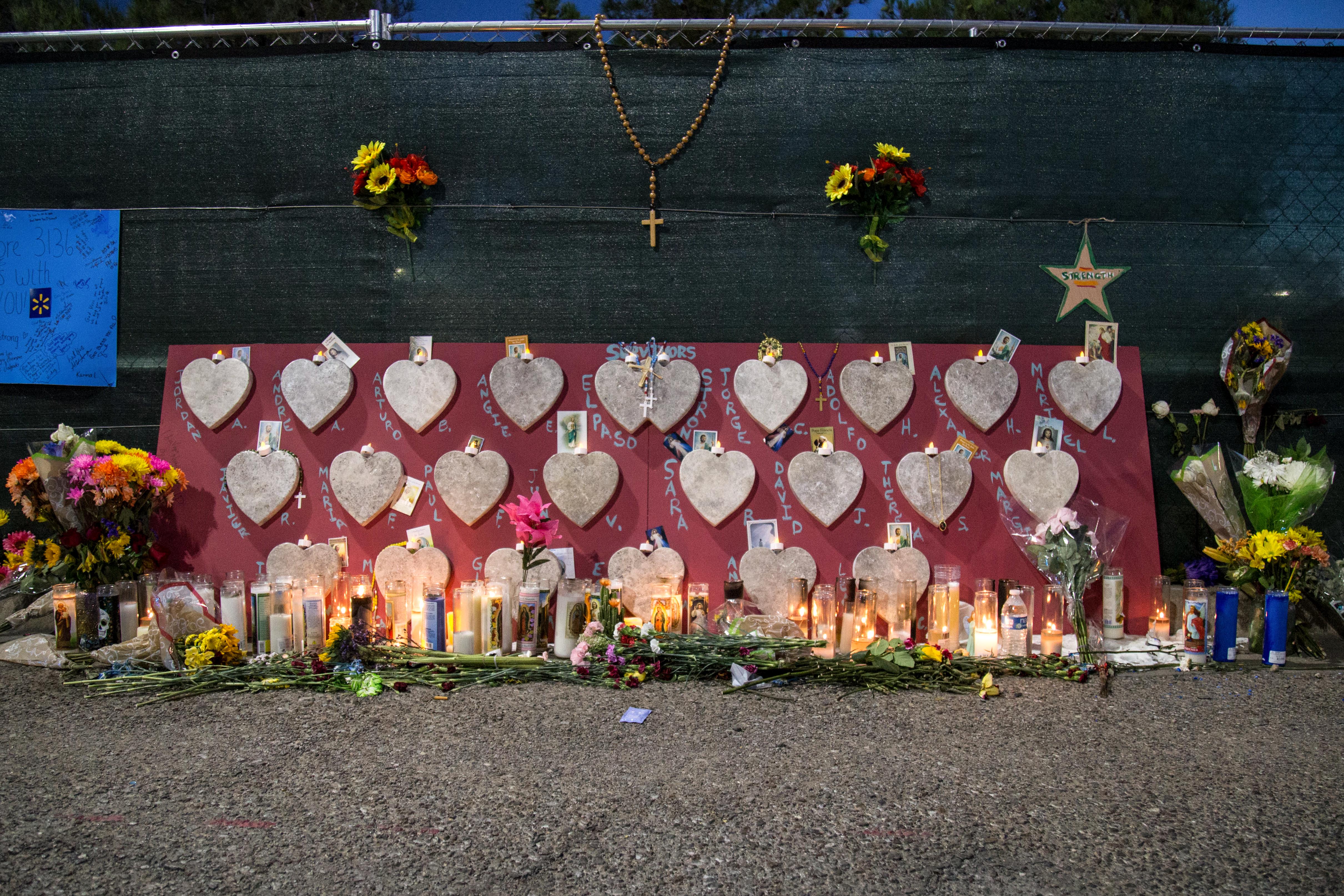
El Paso never will be the same. It will always be marred by the specter of this sinister tragedy. A permanent reminder of the hate promoted by our reckless and incompetent leaders – some, like our president, who directly spit hateful rhetoric, and others, like Nancy Pelosi in the Democratic party, who do absolutely nothing to stop the madness, and to protect the millions of brown, Black, queer, and disabled bodies who now live in perpetual fear under a prejudiced and white nationalist administration.
But as the dust clears from this tragedy, there could be a light: The rest of the world might actually catch a momentary glimpse into the reality of a vibrant immigrant community – a community that has collectively donated blood in overwhelming numbers, become family with a widower, and given “Amor Eterno” a new place as an anthem of healing. Watching El Paso come together to rebuild might just serve as a beacon for the rest of the country on how to repair itself. If any city can teach the world how to love, share and heal, it’s certainly El Paso.
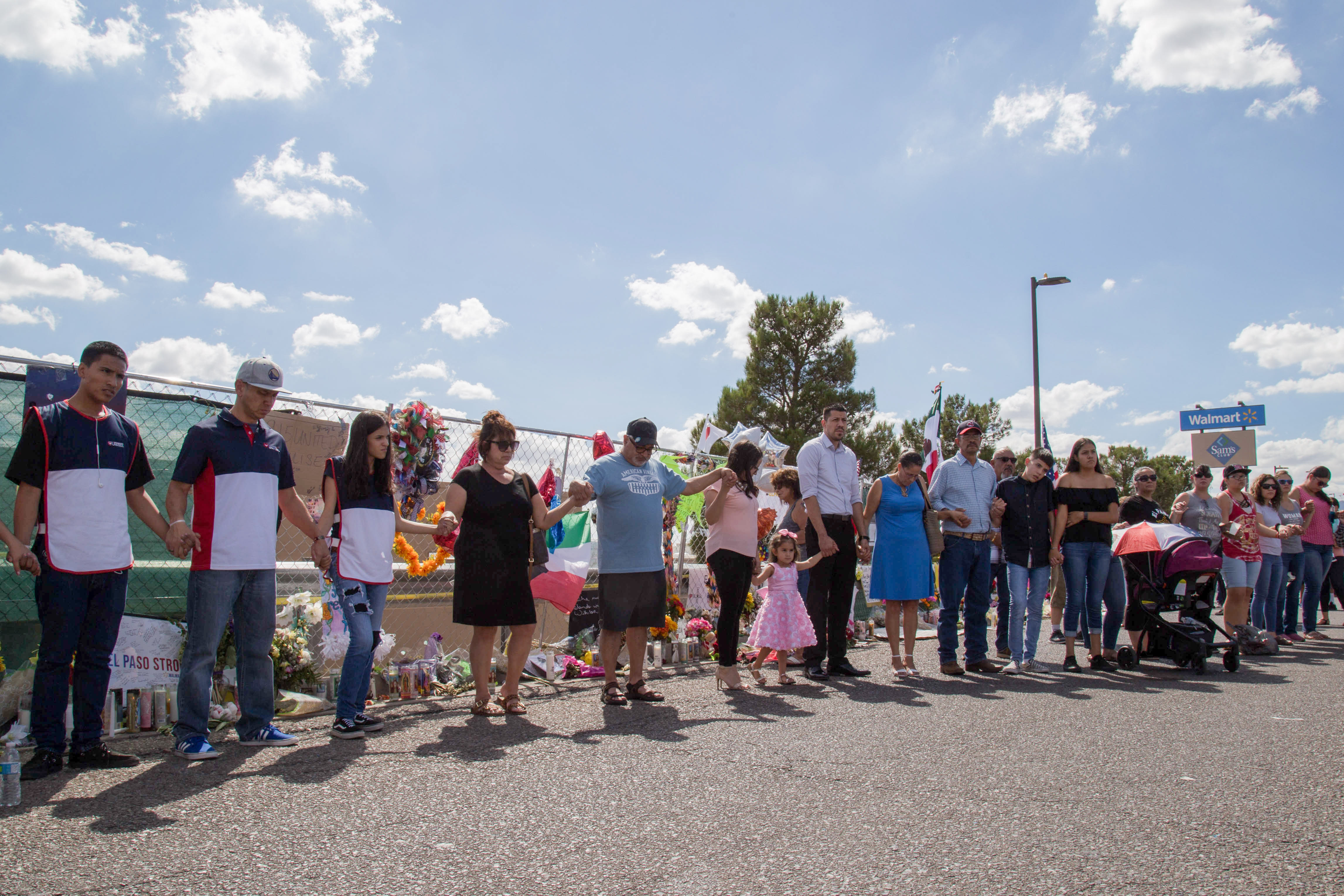
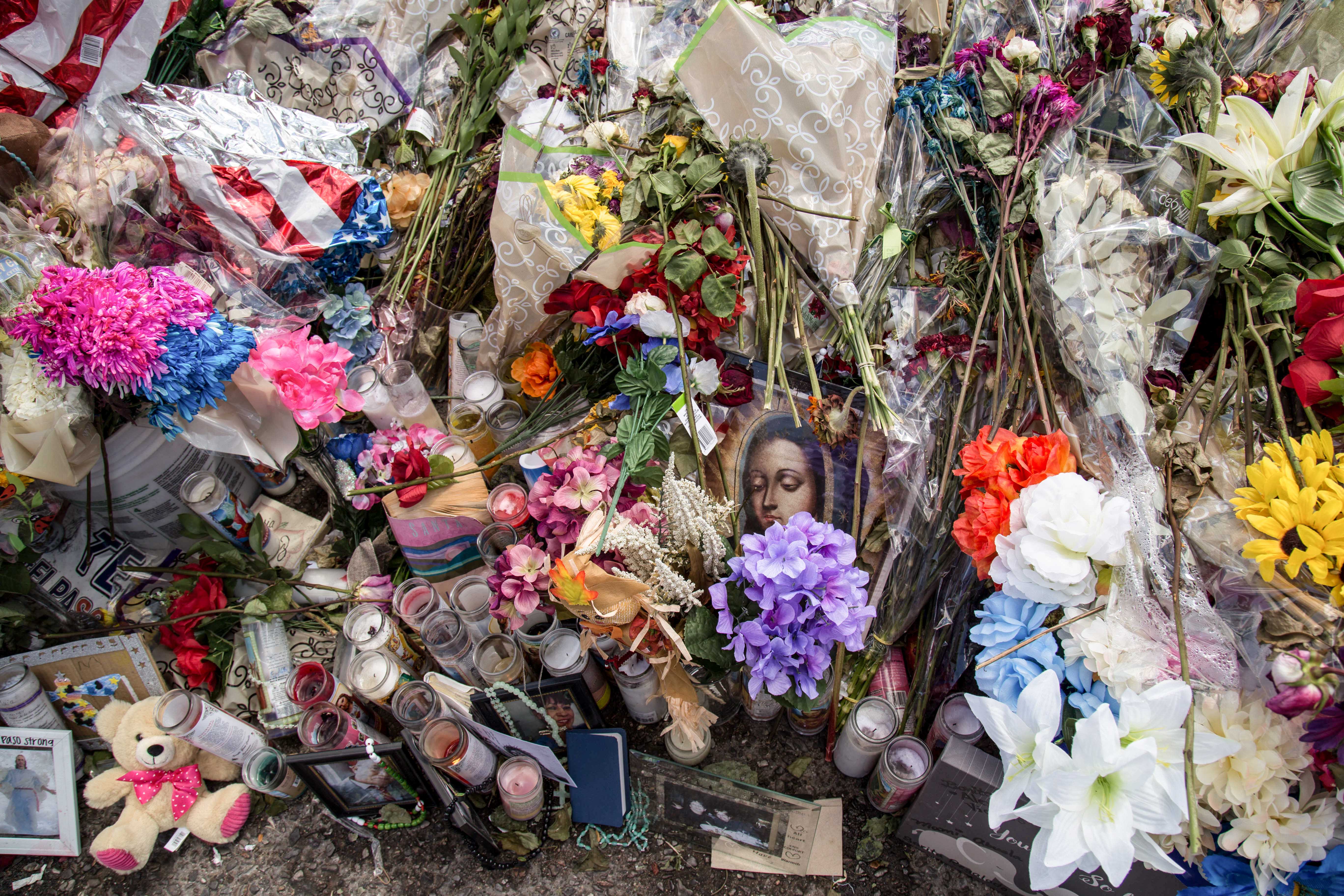
On this Saturday night, at a benefit for the victim’s families at Neon Rose – a quintessentially El Paso bar nestled in a low-key neighborhood – various punk bands rallied to do their part in rebuilding the town they love.
“Whatever happened last week, last Saturday … it didn’t affect just us people, it affected everybody, and right now we gotta show the people of the world how we do, how we take care of our own. We have to do our part,” says Abel Martinez, the organizer.
I walk into the venue and see a bevy of familiar faces, and as the band plays a punk rendition of Marty Robin’s classic song “El Paso,” for a brief second, I forget the significance the song holds this particular evening. But the feeling is fleeting, as I remember the evil that took place just one week earlier in my hometown.
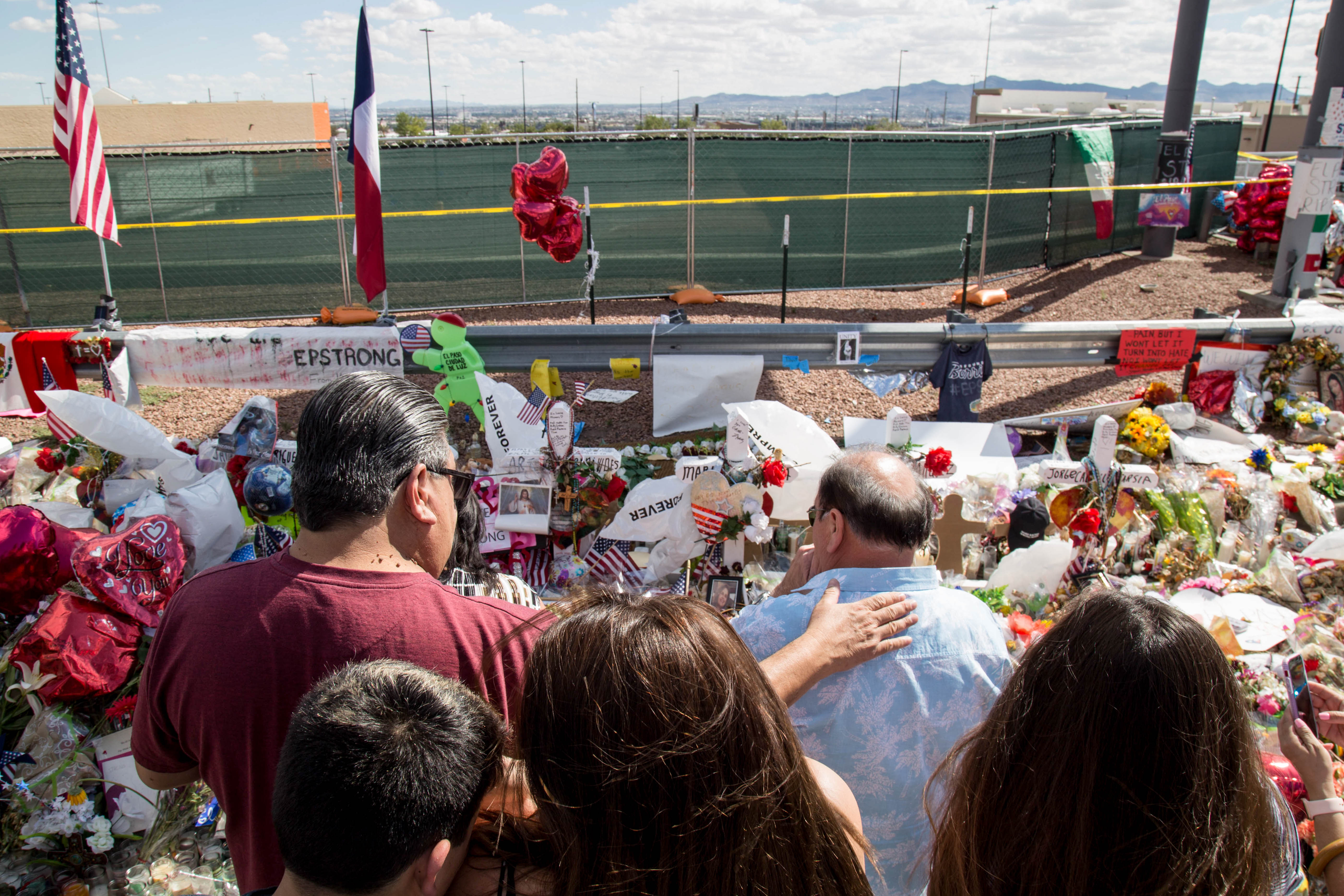
On Saturday, August 3, at 10:40 a.m., Patrick Crusius walked into the Walmart next to Cielo Vista Mall – an area that benefits from a near-constant flow of shoppers from Juarez and Chihuahua – and reportedly opened fire, targeting Mexicans, as he later claimed during interrogation.
Shortly after being arrested (without any incident, as is often the case when young, white men accused of murder are apprehended), word spread of a racist, anti-Latinx manifesto Crusius allegedly posted to 8Chan shortly before the massacre. In it, he echoed many of the same anti-immigrant sentiments as Donald Trump often does at his rallies – including at a rally in El Paso just months earlier.
Many at the time of said rally worried that his stop in the city, coupled with the near-constant flow of fake stories and disinformation (like the recent Daily Caller piece alleging ANTIFA was on its way to El Paso to siege the city) would open the community up to risk. With increased national visibility due to the immigrant concentration camps just 30 miles out of town and an influx of right-wing militia groups like We Build The Wall – which recently erected a symbolic portion of Donald Trump’s wall between Sunland Park, New Mexico and El Paso – many residents felt something brewing.
This shooting was the culmination.
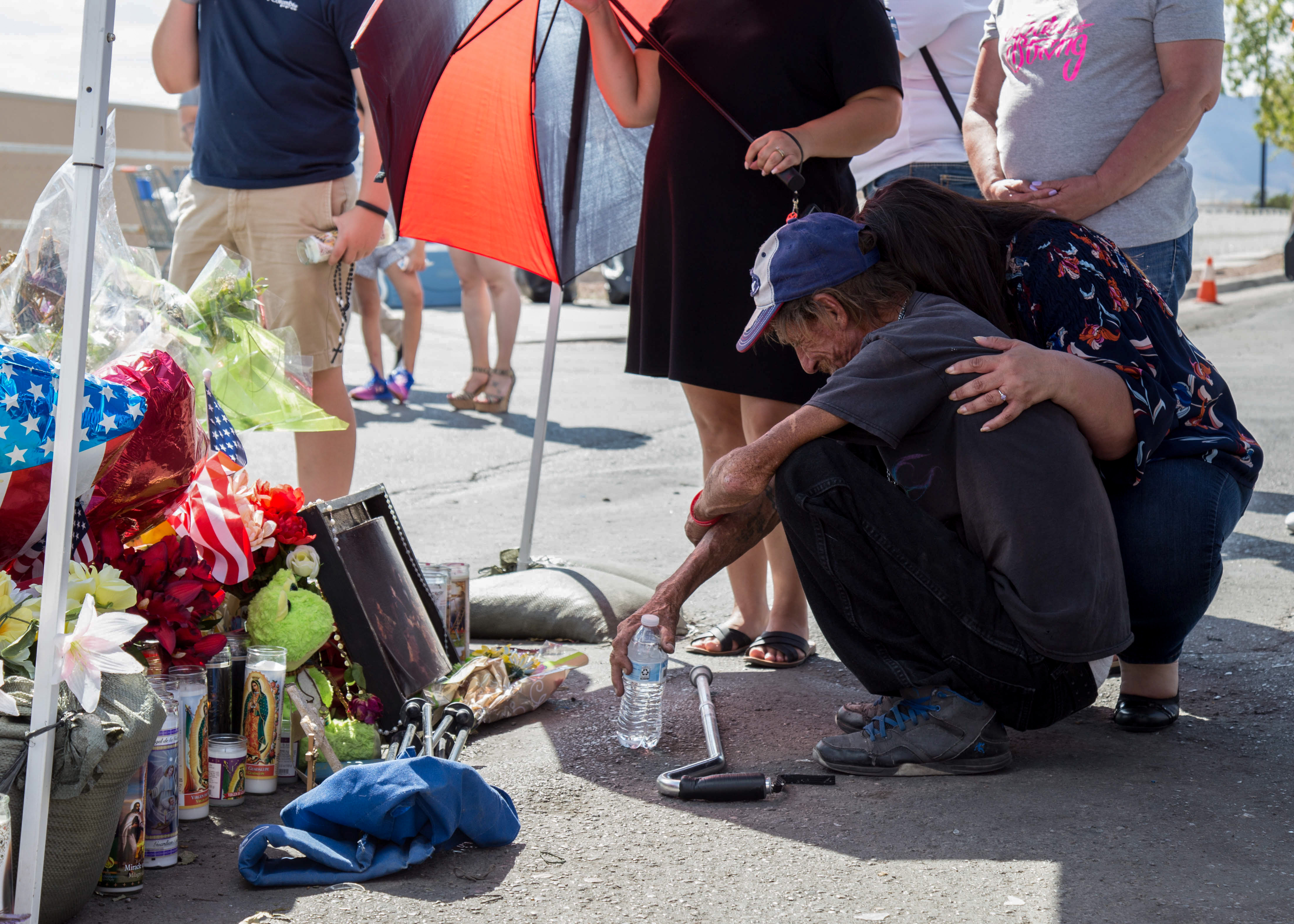
The morning after the benefit, the makeshift memorial behind the Walmart where the crime took place burst with people paying respect. One week had passed since the shooting, and many were still processing, struggling to believe this was now the reality for one of the safest cities in America.
“This used to be a violent city. This used to be the gang capital of Texas,” says Carlos Ramirez Jr., a Brown Beret Chicano, member of La Causa and community organizer.
“From a violent city, we made [El Paso] into a safe city … We promote peace. We don’t believe in violence,” he adds, as his voice cracks. “I don’t know what we have to do to make them realize that we’re human beings.”
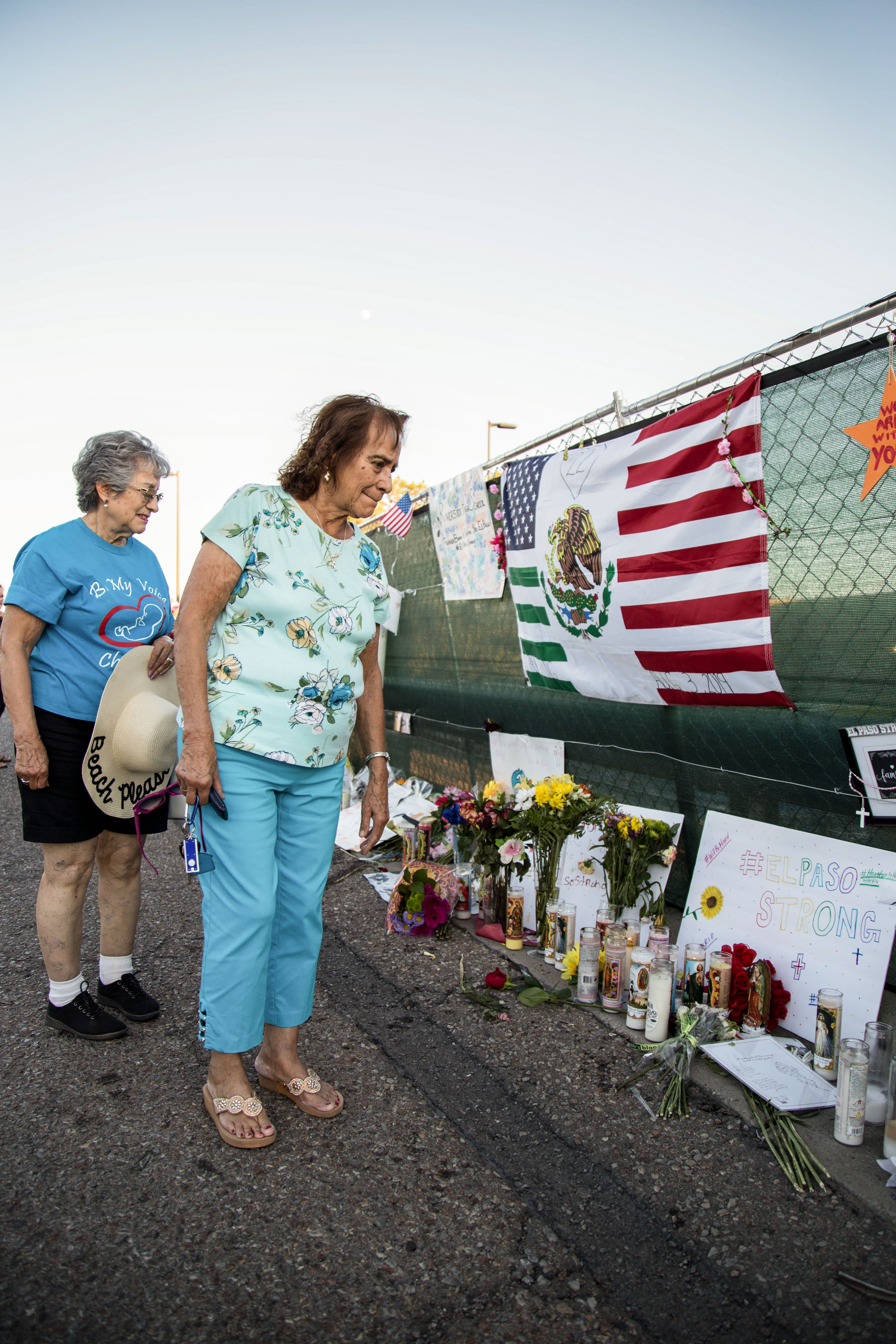
But dehumanization of communities of color is one of the key tenets of the Trump administration. It trickles down from the highest levels of government, where our president refers to Latin American immigrants as invaders – a sentiment that was echoed in Crusius’ manifesto – to the daily behavior of Custom and Border Protection officers. Take the officers who allegedly made a Honduran immigrant man walk around a detention center wearing a sign that read, “Me gustan los hombres.”
Or the Border Patrol agents – who just days after the gunman at Walmart pointed his assault rifle at brown bodies – also terrorized brown bodies with pointed guns while working between Sunland Park and El Paso. They allegedly fired rubber bullets at peaceful swimmers in the Rio Grande.
I went to the site of the alleged assault two days later with city council Representative Peter Svarzbein to see the area where the incident took place. In the river were dozens of small children who, on a blistering near-100 degree day, likely had no other means to keep from succumbing to the brutal heat.
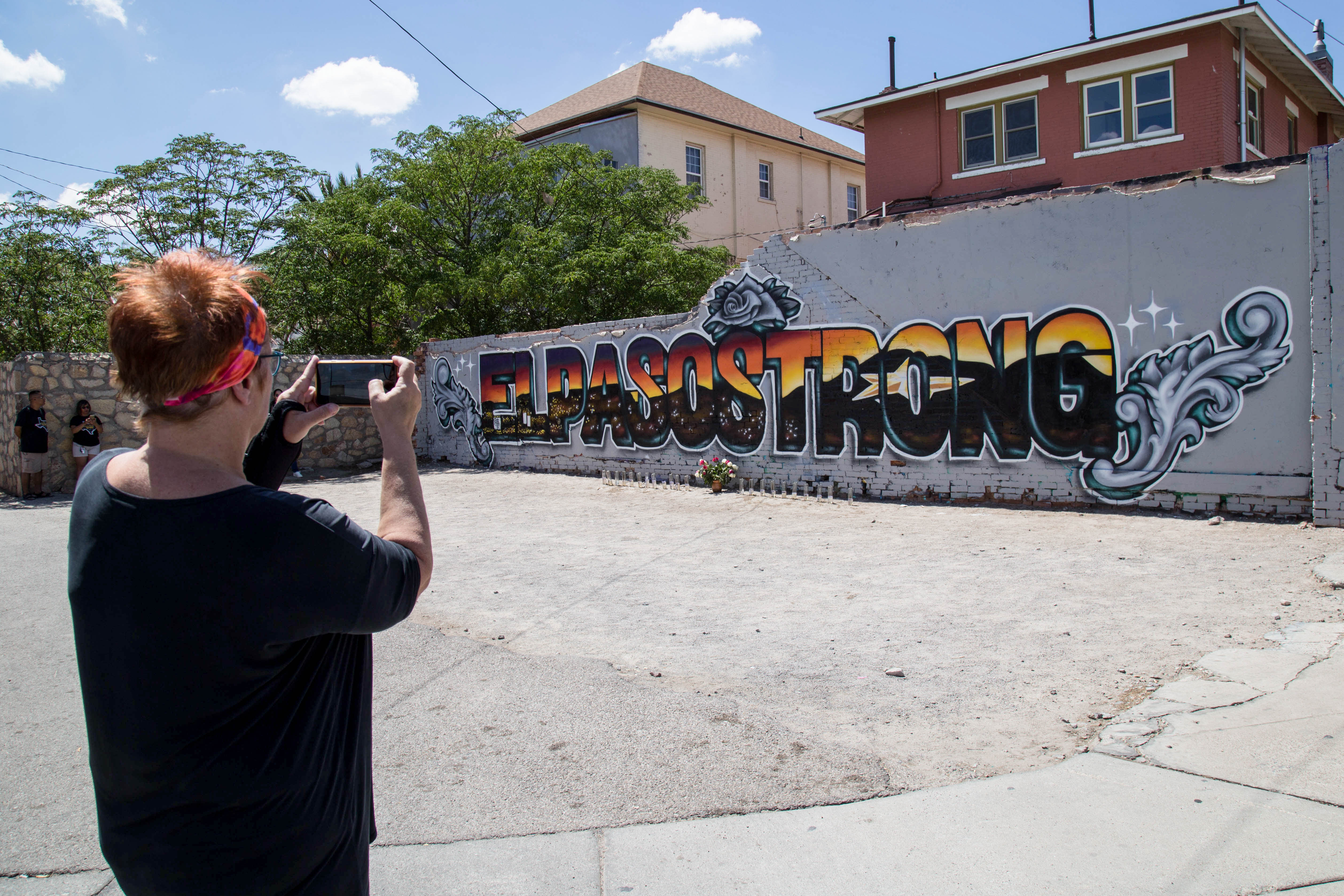
“What you’re looking at is what residents have been using the river there for decades: for relaxation and leisure. The Franklin dam on a Sunday is not a place where someone is trying to evade the law,” he mentions, pointing out the people fishing along the banks. The area is clearly heavily patrolled, and the people in the river are obviously using it recreationally. “This kind of posturing by our federal government is incorrect and once again, damaging to our way of life here,” he says, as we hop back into his car to avoid any potential encounters with overeager right-wing militia.
A few days later, the city of El Paso held its official vigil at the relatively new Southwest University Park – a stadium that initially divided many El Pasoans, but is now seen by some as a symbol of the city’s unity. Thousands lined up to pay tribute and mourn the senseless act of violence together, while looking to their elected leaders for some kind of comfort or reassurance.
But from the beginning, there was something almost sinister about Texas Governor Greg Abbott – a gun’s rights advocate who once said he was embarrassed that Texas lagged behind California in gun sales, and even urged Texans to “pick up the pace” – being the first guest of honor at a vigil for 22 victims of a racist’s assault weapon.
And aside from tasteless social media jokes, Abbott has been a staunch supporter of the NRA – even garnering the gun lobby’s praise as recently as June when he signed 10 NRA-backed gun bills into law.
His presence there felt like a cruel joke and a careless, soulless move by city leaders who welcomed him on that stage.
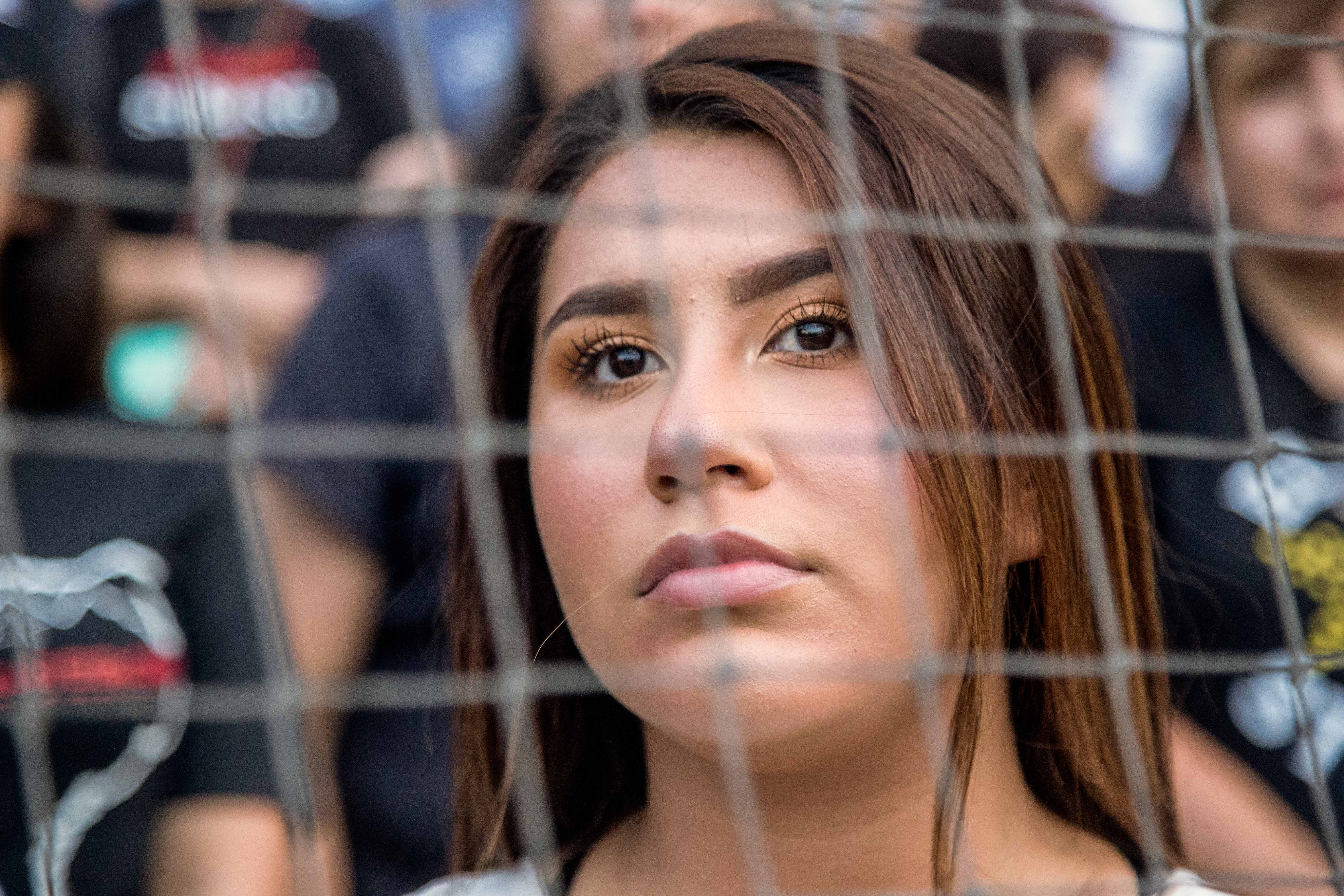
Yet, that kind of reckless oversight is to be expected from local leaders – including Republican Mayor Dee Margo – who all failed to mention the words white supremacy and excluded any women from the slate. The only speakers who did: Governor of Chihuahua Javier Corral Jurado, Mayor of Juarez Armando Cabada Alvídrez and Mexican undersecretary Jesus Seade – who made repeated use of the words “white nationalism” and “white supremacy,” garnering him the loudest applause, and a standing ovation.
“Anyone in a position of public trust, or in a public position or really anyone in this country has the responsibility to tell the truth and to describe what happened here, and why it happened here,” says Beto O’Rourke the morning after the vigil when I mention to him how disappointed people I spoke to outside of the stadium were at the evening’s messaging. “Draw the connection between the dots: The president warning of invasions, the killer in his manifesto talking about ‘an invasion,’ right-wing radio and TV – including Fox News talking about replacement. The killer talking about replacement. If we just keep throwing our hands up and keep saying ‘How does this stuff happen?’ almost as it was a force of nature, or an act of God or something we just have to endure and then recover from and then repeat, then we are going to continue to see it again.”
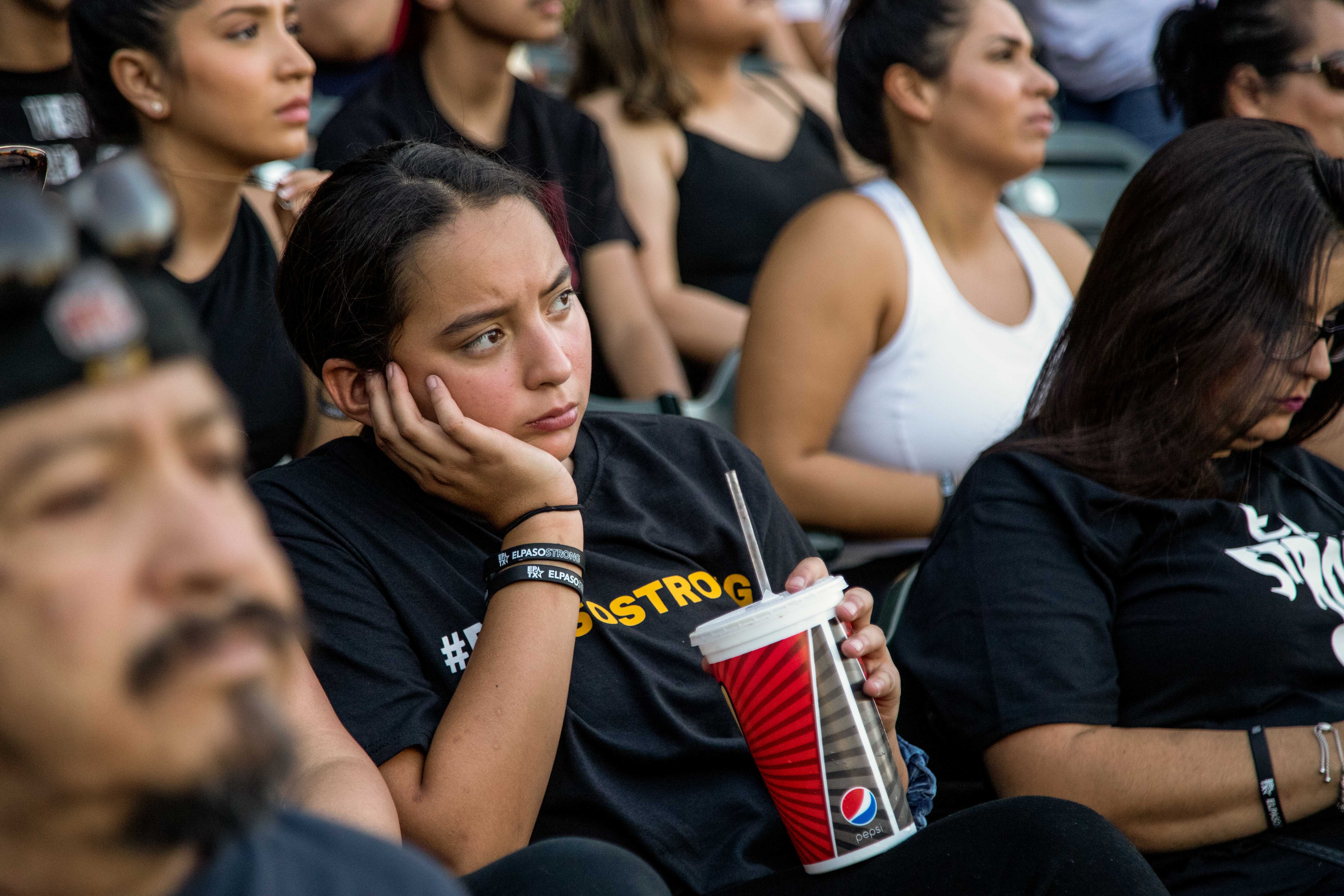
But even where some of El Paso’s milquetoast city leaders have failed its people, others have picked up the slack, like Congresswoman Veronica Escobar, whose unapologetic messaging perpetually centers the president’s racism as a key cause of this tragedy. “I’m disappointed in anyone who fails to call that out and hold anyone accountable and propose real solutions to confront this kind of hatred and violence,” O’Rourke continues. “But I’m also proud of a community who has done just that, regardless of elected leadership.”
One such community leader is Victoria Perches, the lead organizer of the El Paso Strong rally at Lincoln Park – one of the most iconic Chicano meeting grounds in the city. The group’s mission is to educate El Pasoans about gun laws and white supremacy, while avoiding skirting the issues. “We want to make sure that people are educated about certain gun laws,” she says, listing the various resources that will be available to the community. “I think the fabric of El Paso is just really the whole aspect of friends that turn into family.”
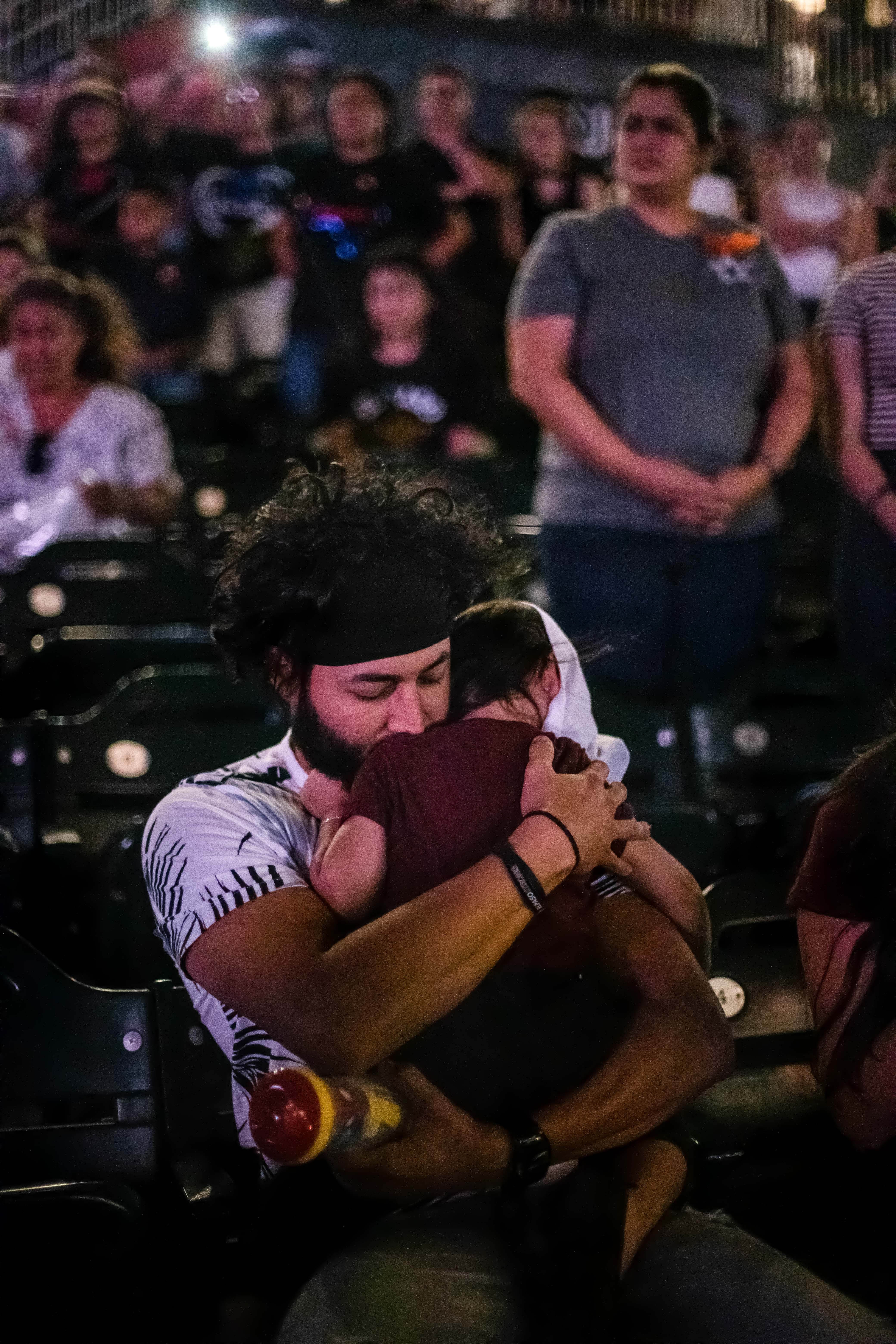
Yet, even with community leaders facing the issues head-on, it’s often the press that’s tasked with, and often comes short of, telling the story of a city in the aftermath of tragedy, or even of a country in the aftermath of electing a racist president.
“There have been so many extraordinary members of the press in this country, who have been calling this out from the beginning and predicting what would happen, but there have been too many others who were willing to turn a blind eye or turn their back on it altogether,” O’Rourke adds. “But if we don’t tell it, then this country will never get better.”
Regardless of the city’s elected leadership or the stories we write, it’s the people of El Paso who will define its voice moving forward. They’ll continue supporting one another, like they did on the following Friday, almost two weeks after the massacre, when thousands lined up to pay respect to one of the victims, Margie Reckard, and to support her widower, Antonio Basco – who made the funeral public as he had no other family. “I love y’all, man,” he said as he broke down, clearly overwhelmed by the outrageous display of solidarity.
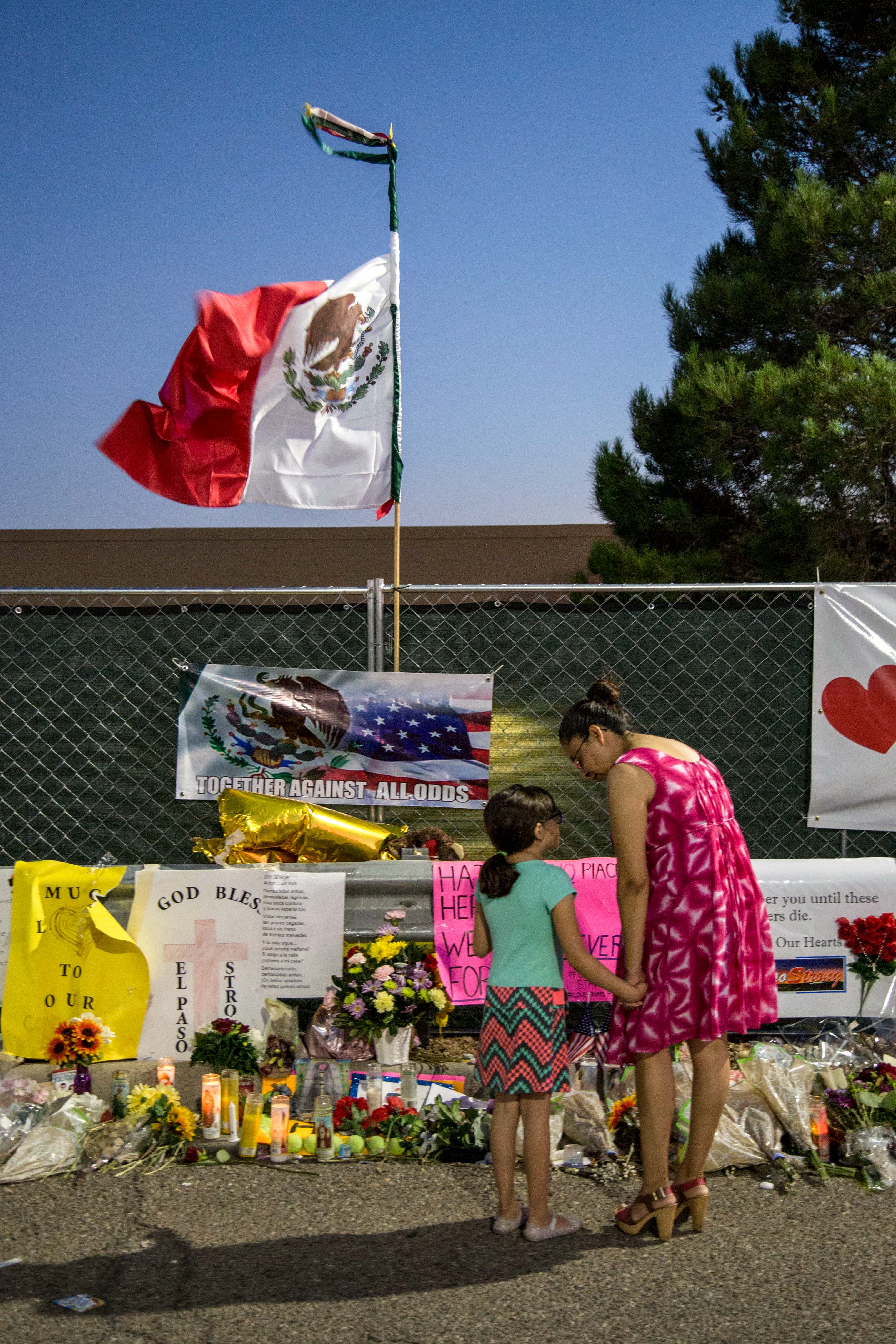
And the shows of support and solidarity won’t slow down. R&B singer Khalid, who made El Paso his home before launching his successful career, will have a benefit for the victims. The Refugee and Immigrant Center for Education and Legal Services (RAICES) will also host a call to action against white supremacy in El Paso featuring Cuco, La Santa Cecilia and a speaking engagement by Residente – who most recently helped lead a charge in Puerto Rico against their corrupt governor.
El Paso will rebuild and will recover. The wounds will heal, and they’ll begin to scar. The smell of weekend carne asadas will fill the air, as children line up for their turn to jump in the brinca brinca. Despite any travel warnings, the steady influx of visitors from Juarez and Chihuahua will continue to give the city a vibrancy like no other.
But as this community – and the world – moves forward, it’s important to never forget the brazen white supremacy that got us here. It’s more crucial now than ever that we call it what it is and hold not just those who blatantly push their racism accountable, but also those who allow it to go unchecked.
“We want to keep [El Paso] a safe city, and we hope, we pray that we can expand it to a safe nation,” Ramirez says. “We’re gonna try to set an example without using violence. Because we’re trying to be a people of peace,” he adds. “But it hurts.”
Production Credits:
Audio Editing: Itzel Alejandra Martinez
Editor: Yara Simón
Photography: Alex Duran and Gabriela Velasquez
Photo Editor: Itzel Alejandra Martinez
Production: Eduardo Cepeda







